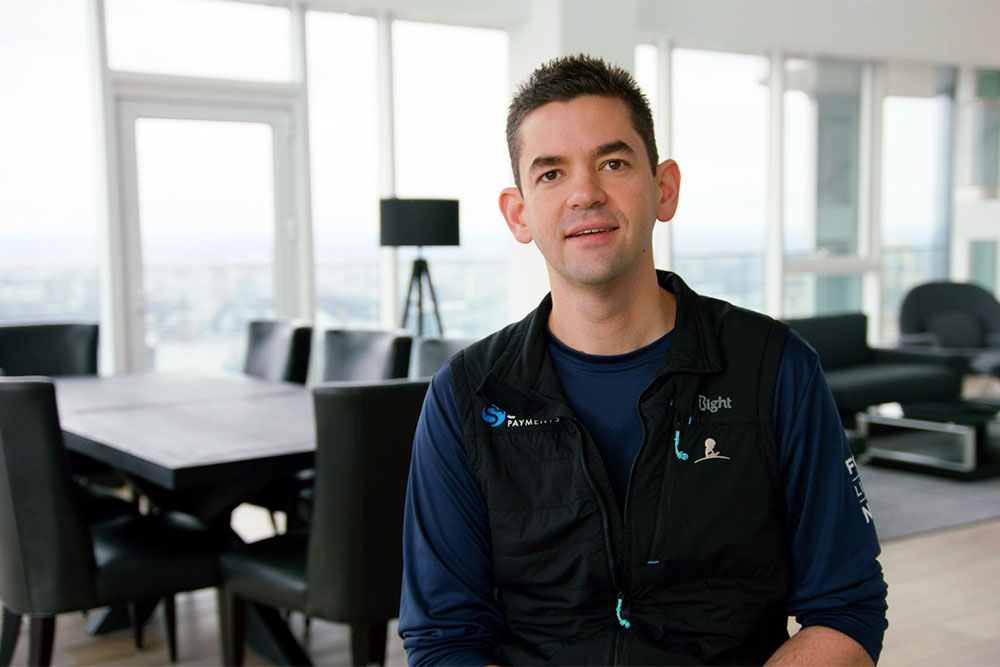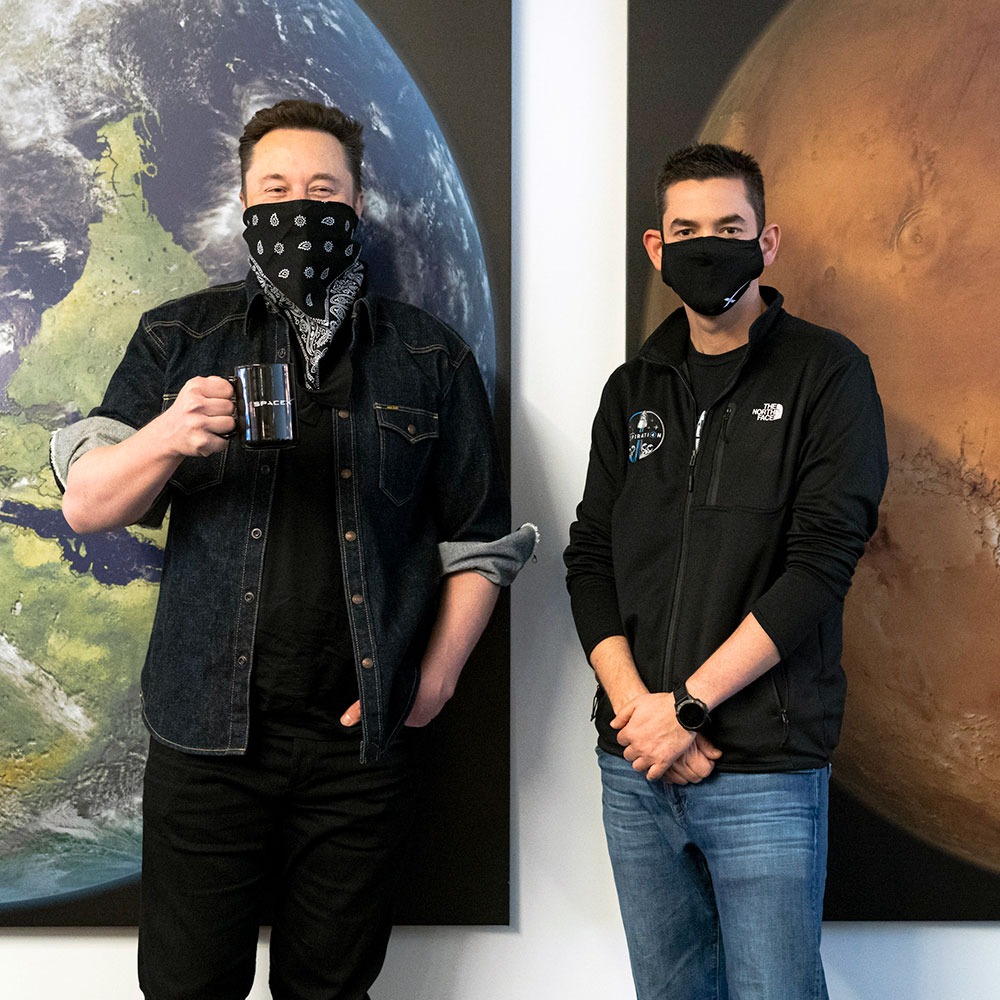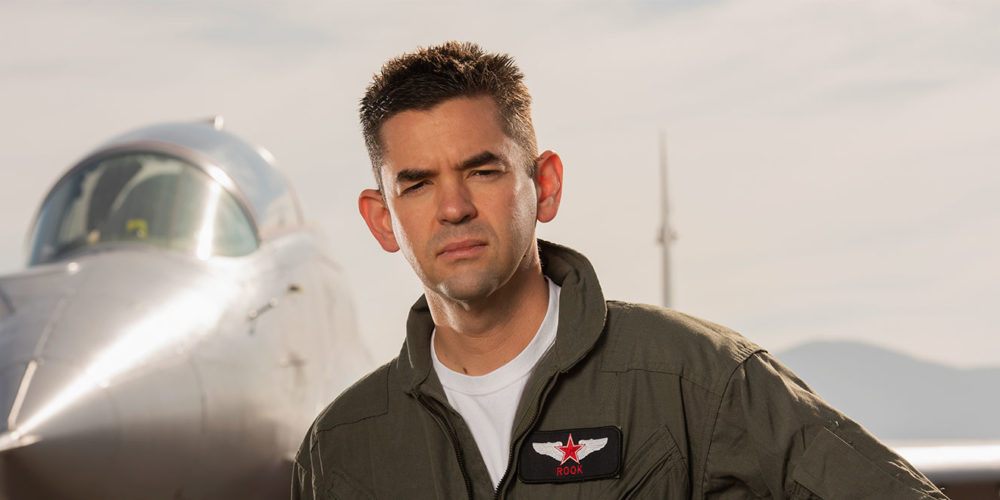Hot on the heels of the first privately operated crewed flight to the International Space Station launched by SpaceX in November 2020, Jared Isaacman (’11) is deep into astronaut training. In the fall of 2021, he will command a SpaceX Crew Dragon capsule as it blasts into Earth’s orbit, to an apogee of 540 kilometers, on humanity’s first-ever all-civilian spaceflight.
Isaacman’s chosen mission, called Inspiration4, is also a fundraising partnership with St. Jude’s Children’s Research Hospital. It’s the biggest in a series of fundraising campaigns that the tech-maven-turned-billionaire has paired with major aerospace feats.
Teenage Entrepreneur
Isaacman’s career success started early, when he was building websites on the side for business owners he met at his part-time job at CompUSA. One of those clients was a payment processing merchant, who offered Isaacman a full-time job in his information technology department. Isaacman’s parents conditionally OK’d his departure from high school: “My parents wanted to make sure I at least had a high school diploma, so I got a GED. That was the big requirement,” Isaacman said in an interview with CNBC.

Isaacman got ideas on the job that inspired him to start his own payment processing company, initially called United Bank Card, with the goal of greatly simplifying the process for small businesses wanting to accept credit card payments. He hired his dad, an experienced salesman, to be the outward face of the company until Isaacman himself was in his mid-20s — old enough to be taken seriously by their potential clients.
The company, now known as Shift4 Payments, has more than 200,000 client businesses and processes more than $200 billion in transactions annually. As CEO, Isaacman’s 38% ownership stake made him a billionaire when the Shift4 Payments’ initial public offering in 2020 valued the company at $6 billion.
Aviation + Philanthropy
During his 20s, though, his work consumed him, and he needed an outlet. He started taking flying lessons. True to his adventurous nature, he decided to break the world record for circumnavigating the globe in an airplane and turned his attempt into his first large-scale fundraising effort.
It took two tries to break the record. “We learned a lot that first time, as far as what countries you can fly over, which ones don’t like each other and how to speed up the refueling turnaround time,” he said, during an Aviation Outlook webinar hosted by Embry-Riddle in March.
“It gave me a huge appreciation for how easy it is to fly in the U.S., especially learning to fly. The concept of VFR [visual flight rules] isn’t as much of a thing in other countries. In Japan, for example, every airport is on a slot system. You either make your slot time, or you’re on the ground.”
He succeeded in 2009, circling the globe in less than 62 hours in a Cessna Citation CJ2. He beat the previous record by about 20 hours and helped raise $100,000 for the Make-A-Wish Foundation.
From Draken to Dragon
Thoroughly fevered over flying, Isaacman bought an ex-military fighter jet while he was pursuing a bachelor’s degree in professional aeronautics at Embry-Riddle’s Worldwide Campus and began trying out aerobatics with some friends. But things escalated.

“When you have one plane, you realize quickly all the benefits of having two planes. You can do formation flying and you can ‘fight’ each other. And once you have two, you imagine the things you can do with four. Next thing you know, we have five [Aero] L39s and two [Mikoyan-Gurevich] MiG-17s in matching paint jobs,” Isaacman said in the Embry-Riddle webinar, describing the Black Diamond Jet Team’s fleet and his role as right-wing pilot. “The airshow circuit is a rock star lifestyle for sure.”
Running a seven-jet fleet is also very expensive, Isaacman said, especially with the temperamental MiGs. “No sponsorship dollars can ever offset all that. We were having the time of our lives, but we knew we couldn’t do that forever.”
Just a year after graduating from Embry-Riddle, he pivoted the airshow team to a commercial adversary support business by creating Draken International. His company specialized in air-to-air training, putting up many types of ex-military aircraft to simulate air battles with U.S. Air Force pilots. After eight years, Isaacman sold Draken to Blackstone Group in 2019.
Isaacman is now preparing to command a mission even higher and faster than any fighter jet can go. Recent advancements in the commercial space industry are finally able to make the space-travel dreams of a select few come true. But Isaacman is once again using the opportunity to do some additional good in the world.
“Even in the basement days of my company, corporate responsibility has always been a big part. I’ve tried to support a handful of worthwhile causes,” he said in the webinar.
He hopes the Inspiration4 mission will help St. Jude’s Hospital raise $200 million toward its efforts to fight childhood cancers. Isaacman, who is funding the SpaceX mission and contributing $100 million to St. Jude’s himself, offered up the other three seats on the Dragon Crew capsule to help publicize the fundraising effort.
The crew was carefully and intentionally selected: scientist and educator Sian Proctor won an entrepreneurship competition; Hayley Arceneaux is a former St. Jude’s patient and practicing physician’s assistant; and Chris Sembroski (’07) is a dedicated St. Jude’s donor. Sembroski, who earned a B.S. in Professional Aeronautics, coincidentally gives Embry-Riddle alumni a 50% representation on the Inspiration4 crew.
“We named our mission to inspire others to see what’s possible here on Earth,” Isaacman said. “Sure, we can go to space, but we can also cure childhood cancer along the way.”
